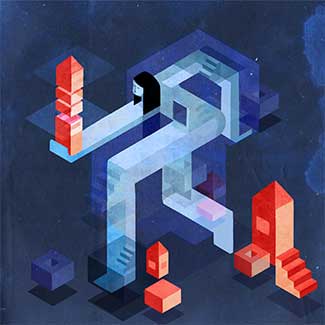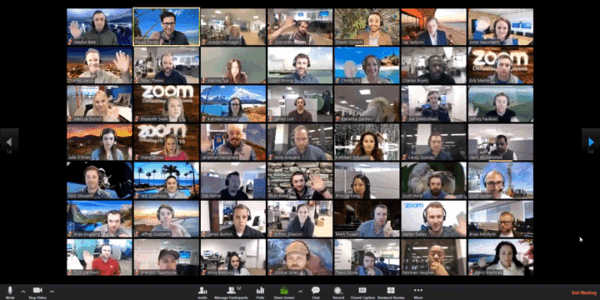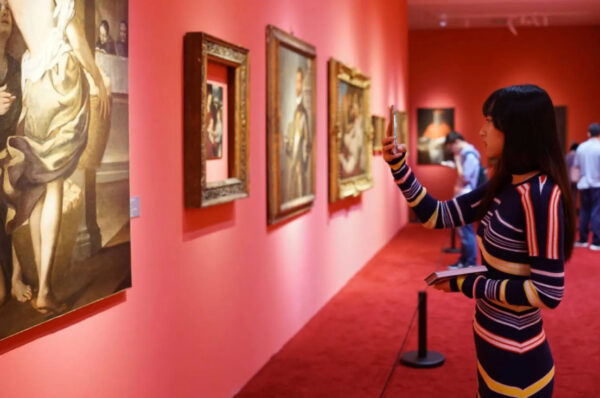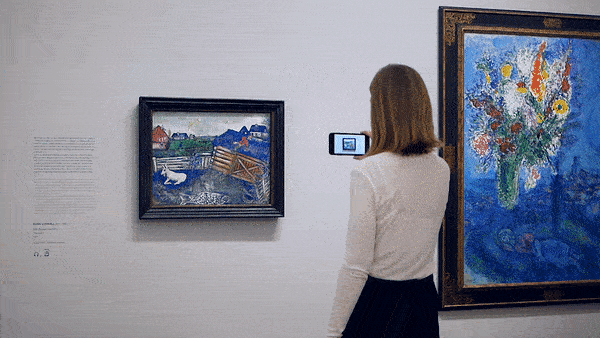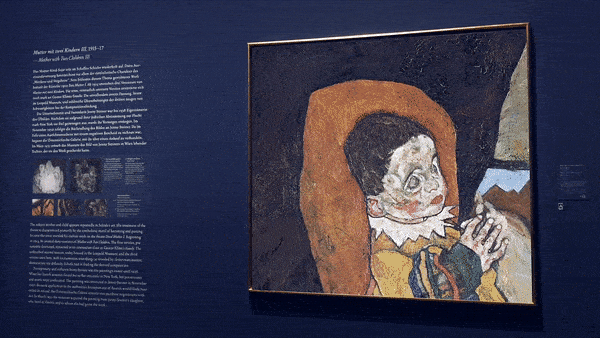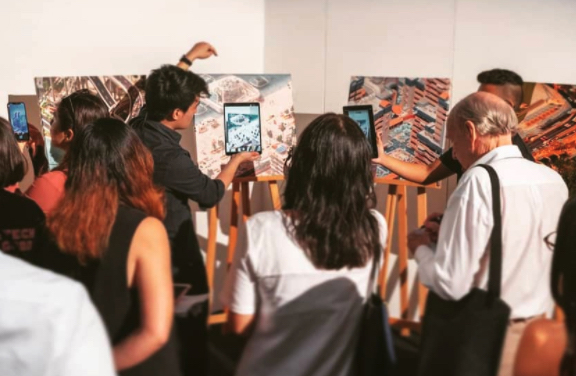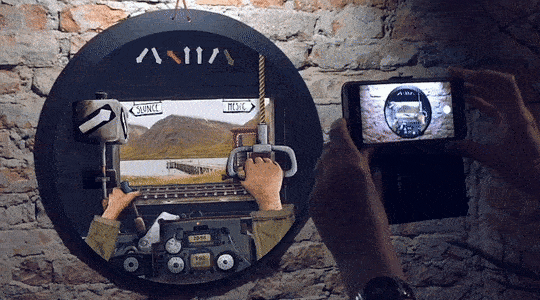Why Augmented Reality Will Save Museums Worldwide
TL;DR
The current situation puts museums in a tough position. With missing tourists, museums have to find a way to reconnect with local communities. The easiest and cheapest way is through technology. This is the best time to define the Museum of the 21st century and bring art back into our lives.
The current situation has been a difficult time for all of us. However, I can’t help but notice how much new technologies are helping us to find new ways of being together whilst staying physically apart. These are the same technologies that I believe will revolutionize art — giving us something to look forward to after the crisis.
As the shelter-in-place orders and lockdowns came into effect, people began reaching out through multiple new platforms. From video conference calls to online games to live video streaming, people are able to stay connected. And it isn’t just the tech-savvy amongst us who are getting on board. These platforms are making advanced communication easy for everyone.
Of course, communication technology has grown to be a significant part of our lives since long before social distancing. But it was only after the lockdowns came into effect around the world that we reached for these platforms like life rafts.
New Opportunities, New Risks
The quarantine has taught us another important lesson about these technologies. Whilst they can help us to stay connected from home, there’s another opportunity to use them to deepen our connection to the real world. Despite all the video conference calls and virtual reality spaces, we still need the real world. I video-chat with my friends and family because I can’t visit them, not because I prefer a Zoom meeting over a weekend barbeque.
These technologies can be used to bring us closer to the world, but they can also keep us away. We can lose ourselves in endless video streaming and virtual reality. But if we allow ourselves to slip off into the digital space, we sacrifice the real world. We risk our participation in society, even our cultural heritage, as humans on this little blue planet.
I feel that the art world seems to be stuck outside of these new platforms. These platforms bring innovation to all corners of the world. Every industry is affected by the unique challenges and opportunities these technologies create. It seems every industry has had to integrate these breakthrough technologies or be passed by.
It is time the art world did the same, not by replacing the old art world with virtual spaces, but by bringing more people into the museums and galleries with virtual tools. Tools developed and created especially for the art world.
Augmenting Art
At Artivive, we asked the question: What if we could take our recent technological advances and combine them with art?
When we started in 2017, we believed we could use new platforms to revitalize (rather than replace) the art world. We believe that the museum setting and our technology could empower each other. The new and the old, brought together.
First, we looked at the art you find in museums. When I first started visiting art museums, there was a wall between me and the artwork. It felt distant, dry, and almost dead. I was missing the connection and a way to somehow interact with the piece in front of me. I wanted the painting to tell its story. I think many people feel that way, and it’s a challenge that seems to get worse with every generation. So many of us grow up feeling disconnected to this extraordinary world of expression and creativity.
While there are audio guides in almost every art museum, they are an outdated solution almost 70 years old. All they can do is rattle off information. It’s hard to believe we’re stuck with audio guides when our smartphones let us interact with the entire knowledge of humankind.
The Promise of Augmented Reality
Augmented reality is possible with the same device you take selfies with. You can point your phone’s camera at objects in the world and bring them to life revealing hidden narratives through digital content, moving images, and audio clips.
Augmented reality can bring a painting to life, allow it to tell its own story, and allow you to join the conversation. It can help museums, artists, and art lovers, all at the same time. If we merge augmented reality with art, we transform the experience of creating, presenting, and enjoying it.
At Artivive, we truly believe in augmented reality’s power to open up the art world and offer experiences that are accessible and engaging for everyone. That’s we’re is partnering with museums and artists to bring new ways of connecting and seeing each other, through art.
Augmented Reality in Action
Our Artivive app turns your smartphone into a portal, leading museum-goers into a universe where paintings speak, move, and, most importantly, tell their own story.
The Albertina Museum in Vienna uses Artivive to explain the biographies of the artists, the history of their artworks, and the process of their painting. Visitors are now able to go inside the paintings.
One example from Albertina is Marc Chagall’s tremendous work, ‘The Kite’ (1926). When seen through Artivive, it now shimmers and awakens from its slumber, pulling in for detailed close-ups while Chagall’s influences are narrated over the scene.
Through the window of the smartphone screen, the works of masters become living objects. You can try it yourself here.
At Austrian Belvedere Museum, Artivive reveals the paintings underneath the painting you see before you. The hidden world of do-overs is brought to life in a kind of real-time, sci-fi archaeology of the artwork.
Artivive can bring all the relevant information of biography and art history to classic works, ensuring that they will continue to find audiences in the future. And we can use that same technology moving forward, bringing augmented reality into the creative process.
In 2019, the United Nations Environment Programme commissioned works such as ´A Better Tomorrow´ by André Wee and MeshMinds. Augmented reality was used to highlight engaging narratives on the importance of protecting our planet, for a ground-breaking show at ArtScience Museum in Singapore. And we can use that same technology moving forward, bringing augmented reality into the creative process.
Artists are now using the Artivive app to extend their work into the virtual. Alexander Kluge brought out entire new dimensions to his pieces by integrating Artivive into his show. This is a new way to make art: bringing the digital and the analog together. Especially for artists with no prior digital experience.
For more examples of all the amazing Artivive projects, check out our YouTube channel and watch as artists and museums explore all the possibilities.
With Artivive, what would take an audio guide several minutes to present is now available in seconds. Visitors can walk into an exhibition with no prior knowledge or understanding of the art they are about to see, and augmented reality can bring them the insight and sensitivity to history needed to fully appreciate the piece.
It brings us close to paintings from the distant past, and it adds a fourth dimension to new artwork. I think this might be an important update that the art world needs as it moves forward into the next century.
The Museum of the 21st century
Augmented reality is proving to be a powerful new tool for museums and galleries to update and transform the art world. Museums can finally overcome their old image as pretentious institutions for the few. They can bring in more young people and first-time visitors, inspiring art lovers who will go on to live richer, more deeply felt lives.
While most curators want to make their museum a place for people from all walks of life, it’s hard to get newcomers through the door. We can’t let that continue to happen, because art is for everybody.
Given the current moment, a reinvention of the art museum couldn’t come at a more important time.
The global health situation has closed down all of the public spaces we used to share, not least, the art museums. We all look very much forward to when their doors open once again.
Augmented reality is a great way to rediscover long-standing pieces, as well as introduce new ones. It’s an opportunity to re-engage people in their lifelong pursuit of art appreciation. It can also bring in first-time visitors from the local community. It’ll be a novelty at first, but once people experience the museum in this new dimension, it will be their gateway drug to art.
The local community is especially important for museums considering that international tourism, a leading source of museum visitors, will take a long time to recover. I believe augmented reality can be the key to engaging with the local communities and not only bringing them into the museum but also creating content for the exhibitions. The digital extension can be adapted and recreated by local artists and with the help of visitors. This way an exhibition becomes a dialogue empowering the curators and docents.
Augmented reality is not only the most promising way to update art museums, it’s also the easiest to integrate.
The Reality of Augmented Reality
Augmented reality doesn’t require any special equipment or major, expensive upgrades.
Almost everyone walking in the door brings the equipment with them in their pocket. All the museum needs to do is direct visitors to the free Artivive app. Visitors will be more engaged with the exhibition, spend more time in the museum and money in the museum’s gift shop. They will be able to take home augmented reality posters and postcards with the artworks and amaze friends and family. This way, the content created will not only offer a new experience in the museum but will also function as an effective marketing tool for new visitors. Museums will get a much better return of investment compared to buying new hardware.
The content is easy to expand and update with new information or adapt to make connections to a traveling exhibit on display on the other side of the museum.
What’s more, communities can participate in the content. This allows the community to join the museum in the presentation, taking part in the process. These interactions help museums get a clearer understanding of how their communities react to the pieces. That data can be used to bring in art that is more relevant and desired by patrons, and it can highlight new ways to use the technology.
But perhaps the most important part of augmented reality is that it reinforces the museum as a common area that we all share and value.
Artivive encourages us to get off of the couch and immerse ourselves in the world. To use it at an art museum, one goes to the art museum. It isn’t passive, yet rather an active and empowering way to experience art.
The Importance of Bringing Art Back
The ability to create stronger bonds between the viewer and the artwork cuts through this misconception idea that art is elitist. Art is about our humanity that we all share equally.
We need a new kind of museum experience, and we need new art. Luckily, creators and artists are always reaching out to galleries and museums in their communities. And Artivive wants to help them gain access to the exciting new frontier of augmented reality.
And so, Artivive is organizing open calls for content with several institutions around the world. I’m constantly amazed by how many submissions we get — there really is no lack of talent today, no shortage of voices worthy of being heard.
Main takeaways
- Museums need to stay relevant and attract new audiences by embracing technology
- Audio guides are in desperate need of an update
- Augmented reality is the best technology for a broad audience:
– Easy to integrate
– The best narrative for art
– Builds an emotional connection with visitors
– No expensive hardware or maintenance
– Museum visit is still essential / Cannot be experienced without - Integrate local artists and communities in content creation that can bridge traditional art and digital art
- Keep art approachable and relevant for all generations and communities
Learn more about augmented reality with our:
